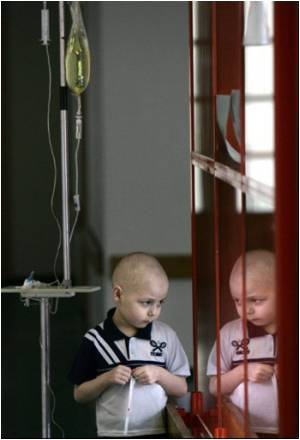In developing countries, Brazil and Malawi have shown the way to low-cost childhood cancer treatment.

Worldwide, an estimated 175,000 children are diagnosed with cancer every year, approximately 90 percent of them living in low-and middle-income countries (LMIC), the journal Archives of Disease in Childhood reports.
In Australia, America and other high-income countries, about 90 percent of children with commonest types of cancer survive long term. But in poorer countries, the survival rates drop to between five and 40 percent, according to a Sydney statement.
"Resource-intensive medical services, such as chemotherapy and hospitalisation, are needed to cure childhood cancers so financial constraints are often cited as a barrier to their treatment in LMIC," said Martiniuk.
Researchers investigated the balance between health gains and financial costs by calculating the cost effectiveness of treatment of two kinds of childhood cancer: acute lymphocytic leukaemia in Brazil (in South America) and Burkitt lymphoma in Malawi (in Africa).
"Examining the actual costs to treat a child with cancer in Brazil and Malawi using globally recognised comparison ratios, we determined that the cost of treating a child with leukaemia in Brazil at $16,700. This is well below the globally recognised 1:1 ratio considered very cost effective," said Martiniuk.
Advertisement
The study contradicts this assumption by showing that when a short course of treatment was used in Malawi for one month, 48 percent of children were cured.
Advertisement
Source-IANS













